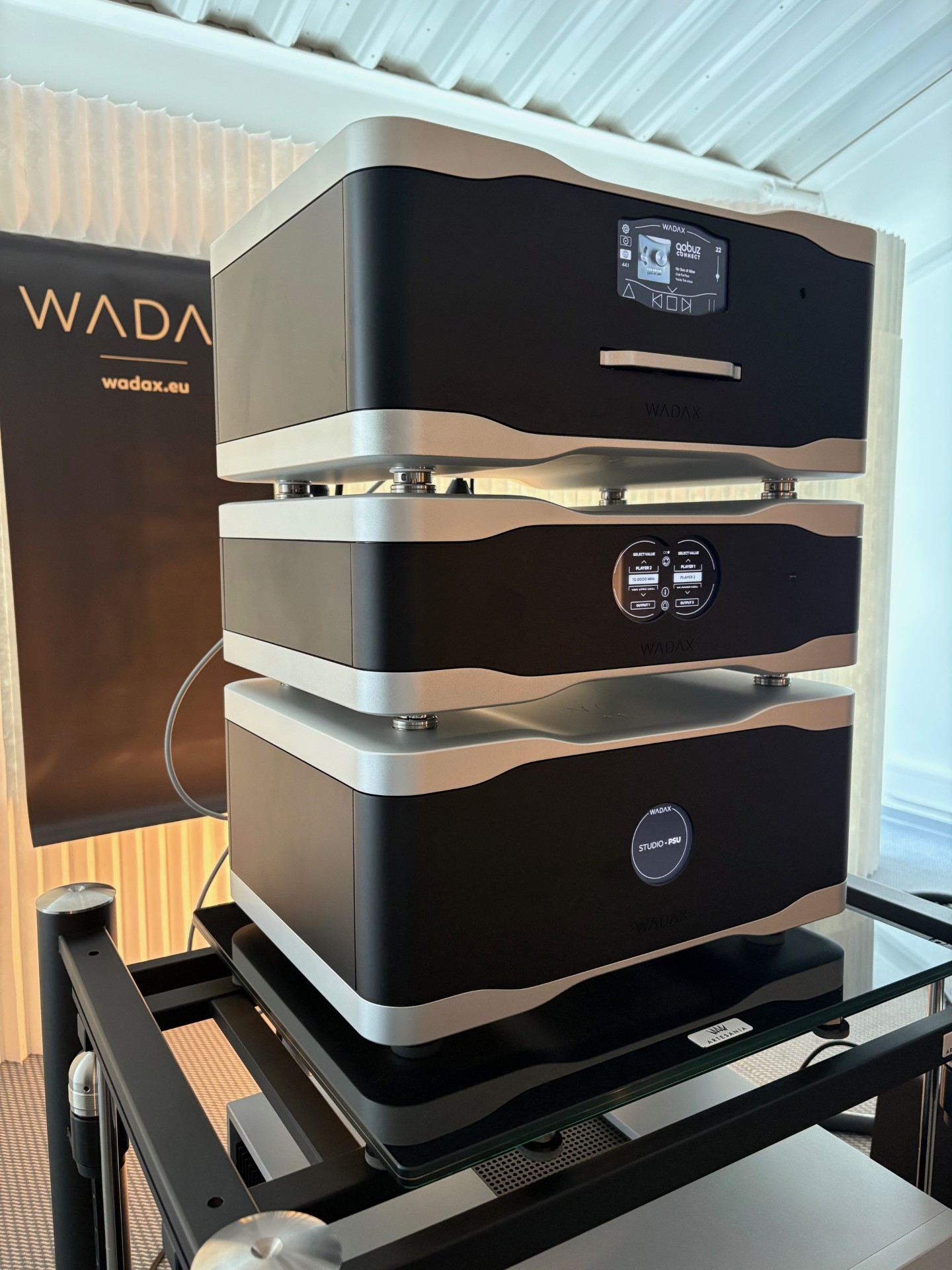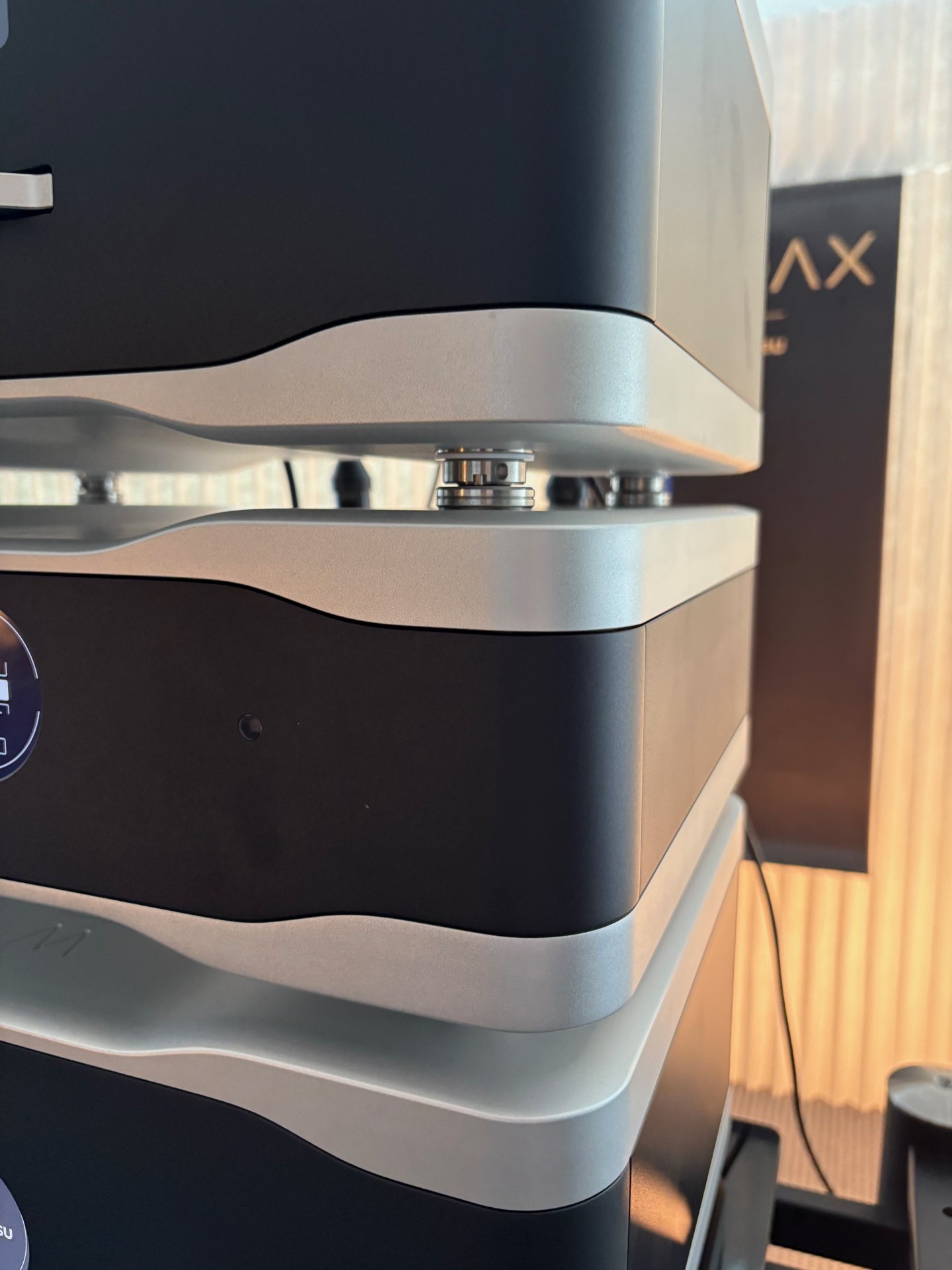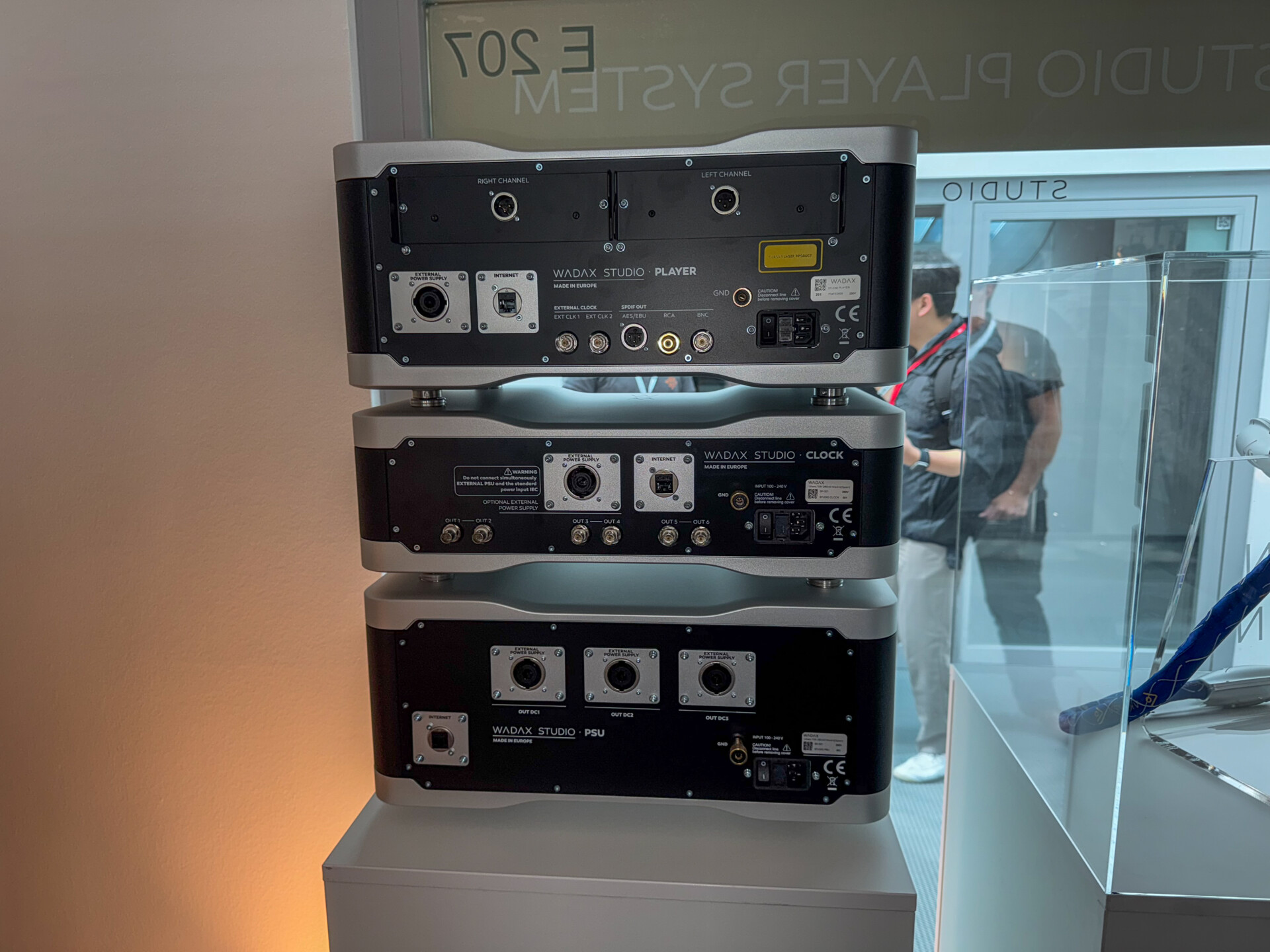If the more ‘affordable’ Wadax Studio Player was the big story at Munich last year, the tale has only gotten taller since. The “One-box wonder” (to quote one Robert Harley) has hit the digital market place like a very large asteroid hitting planet earth – threatening to snuff out all competition. What was a new product last year was to be found at the front of nine different systems in Munich, including many of the better sounding ones. But the real story is the arrival of the next units in the Studio line.

The Studio Power Supply is built into the same chassis as the Player, features 20 PCBs and over 800 discrete components. The rear view seen in the photos is of an engineering prototype and is slightly misleading, in that it shows three output sockets. In production the Studio PSU will have only two DC outlets, allowing it to power a Studio Player and Clock, or later perhaps, the Transport and DAC. Priced at $29,800 USD it can be paired with standard umbilicals or with the new Studio Cable, a copper version of the Reference level Akasa ($6,500 USD each).

The Studio Clock is both extremely sophisticated and unusual. It’s six outputs can be individually configured, with internal options offering all commonly used clock frequencies, selectable from the front panel touch-screen display. Further frequencies can be added as necessary, via firmware updates, while each individual frequency can be further trimmed to tune it to the specific connected component. In this sense, according to Wadax, it really does represent a “true master clock.” The Studio Clock will cost you $28,500.
Neither of the new Studio Line components is compatible with the Wadax Reference units – so no cheaping out by using the Studio Power Supply to drive your Ref Server or Transport! However, both products represent new generation technology for Wadax, so expect to see a series of updates and upgrades to the modular Reference units over time. The one exception to that rule is the Studio Cable, which does offer a third umbilical option to Reference owners, slotting between the standard umbilicals and Akasa DC.

How does the three-box Studio rig stack up? Physically, it incorporates a set of very neat stacking elements that mate the three units together. But that wasn’t the question. What’s much more interesting is what the new PSU and Clock adds to the already impressive musical performance of the Studio Player. Well, if the overall performance of the Magico system was anything to go by, the three-box stack retains the natural sense of musical flow and harmonic density that characterises the Studio Player, but gains in terms of transparency, focus, bandwidth, musical authority, dimensionality and dynamic discrimination. Driving the S2 speakers via Plinius amps, the sound was expressive and lively, with impressive presence, body, colour and attack. Of course, it’s hard to ascribe individual attributes within a system context, which is why I bent Wadax’s collective arms to let me hear the one-box, two-box, three-box upgrade path.

